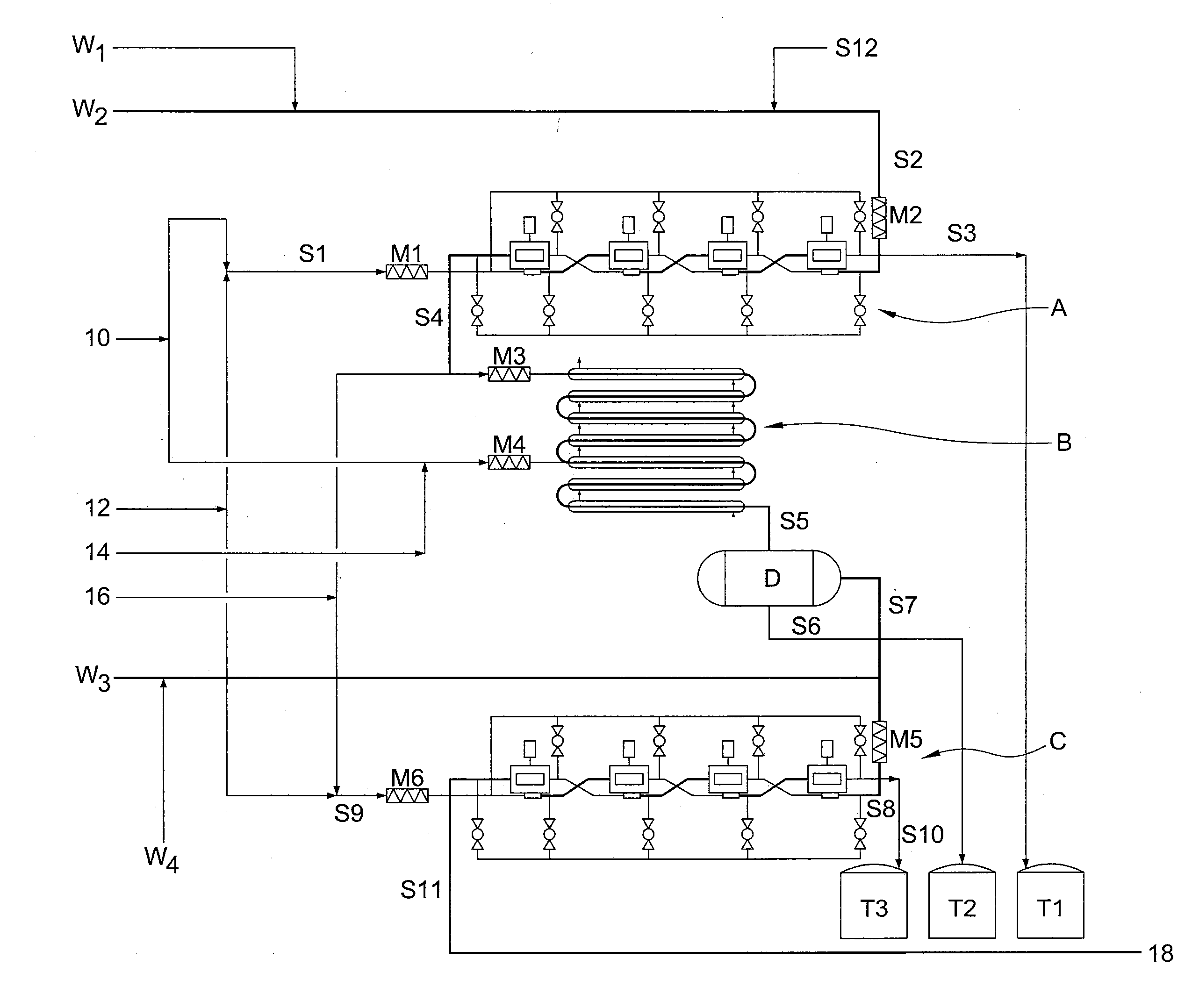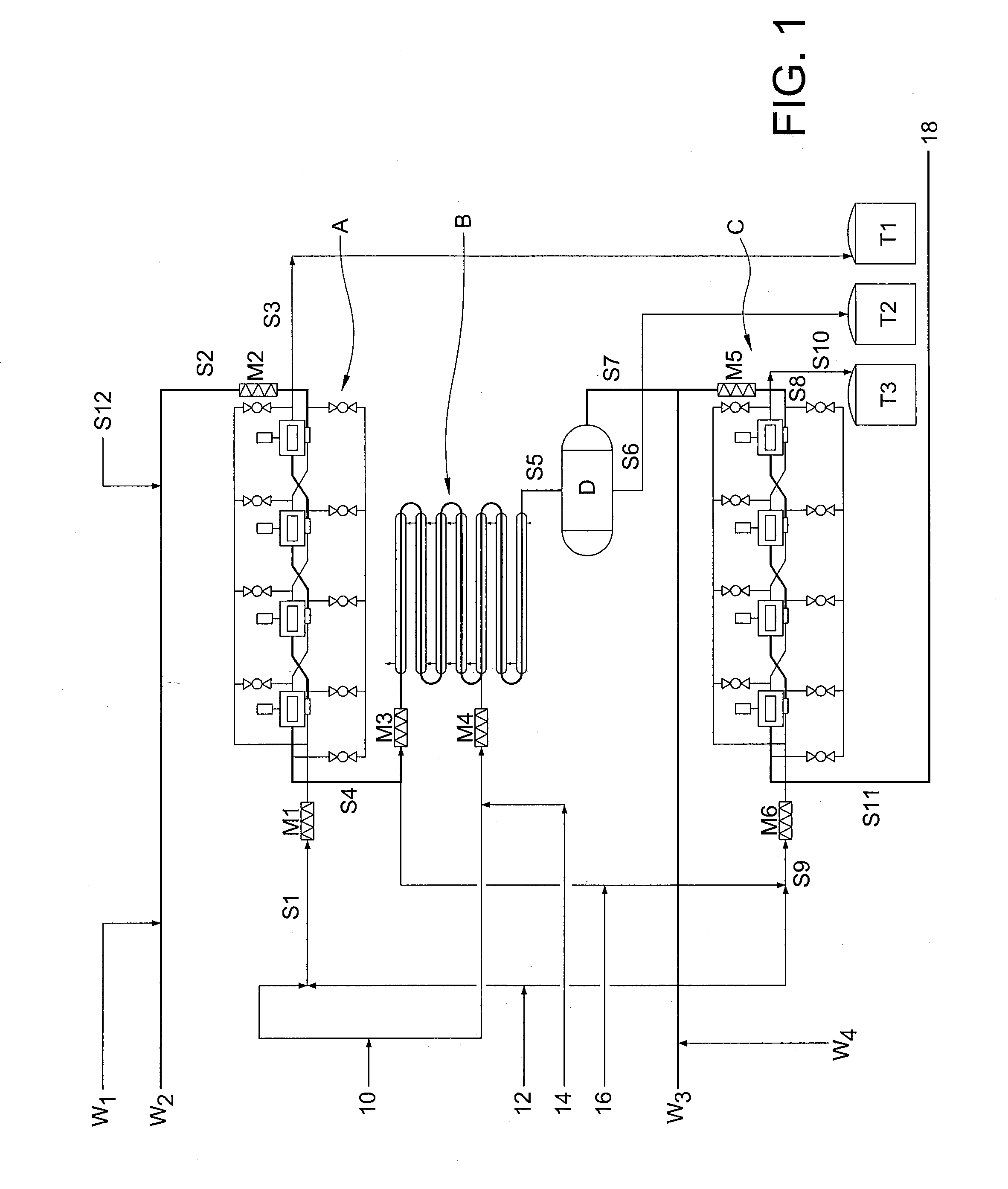Trityl chloride recovery
a technology of trityl chloride and recovery method, which is applied in the direction of sugar derivatives, sugar derivates, esterified saccharide compounds, etc., can solve the problems of trityl group loss in the overall process, mediocre actual yield of correctly protected products, and high cost of tritylating agents to store or treat,
- Summary
- Abstract
- Description
- Claims
- Application Information
AI Technical Summary
Problems solved by technology
Method used
Image
Examples
Embodiment Construction
[0058]It has now been found that trityl groups can be effectively recovered from tritylated sucrose derivatives that are used in the preparation of 4-PAS, a valuable intermediate in the preparation of sucralose. As a preliminary matter, it should be noted that the pentabenzoate (or other pentaester) equivalent of 4-PAS may also be prepared by the methods of this invention, and ultimately converted to sucralose with recovery of trityl groups. For simplicity of discussion, the following description of the invention will refer only to 4-PAS itself, but it will be understood that the use of the pentabenzoate (or other pentaester) equivalent is also contemplated according to the invention.
[0059]Similarly, triarylmethyl groups other than trityl may be used according to the invention. For example, by judiciously modifying the substitution patterns on the aryl rings, the rate of deblocking (detritylation) can be accelerated or retarded, depending on whether the chosen substituent is electro...
PUM
| Property | Measurement | Unit |
|---|---|---|
| mol % | aaaaa | aaaaa |
| mol % | aaaaa | aaaaa |
| wt % | aaaaa | aaaaa |
Abstract
Description
Claims
Application Information
 Login to View More
Login to View More - R&D
- Intellectual Property
- Life Sciences
- Materials
- Tech Scout
- Unparalleled Data Quality
- Higher Quality Content
- 60% Fewer Hallucinations
Browse by: Latest US Patents, China's latest patents, Technical Efficacy Thesaurus, Application Domain, Technology Topic, Popular Technical Reports.
© 2025 PatSnap. All rights reserved.Legal|Privacy policy|Modern Slavery Act Transparency Statement|Sitemap|About US| Contact US: help@patsnap.com


